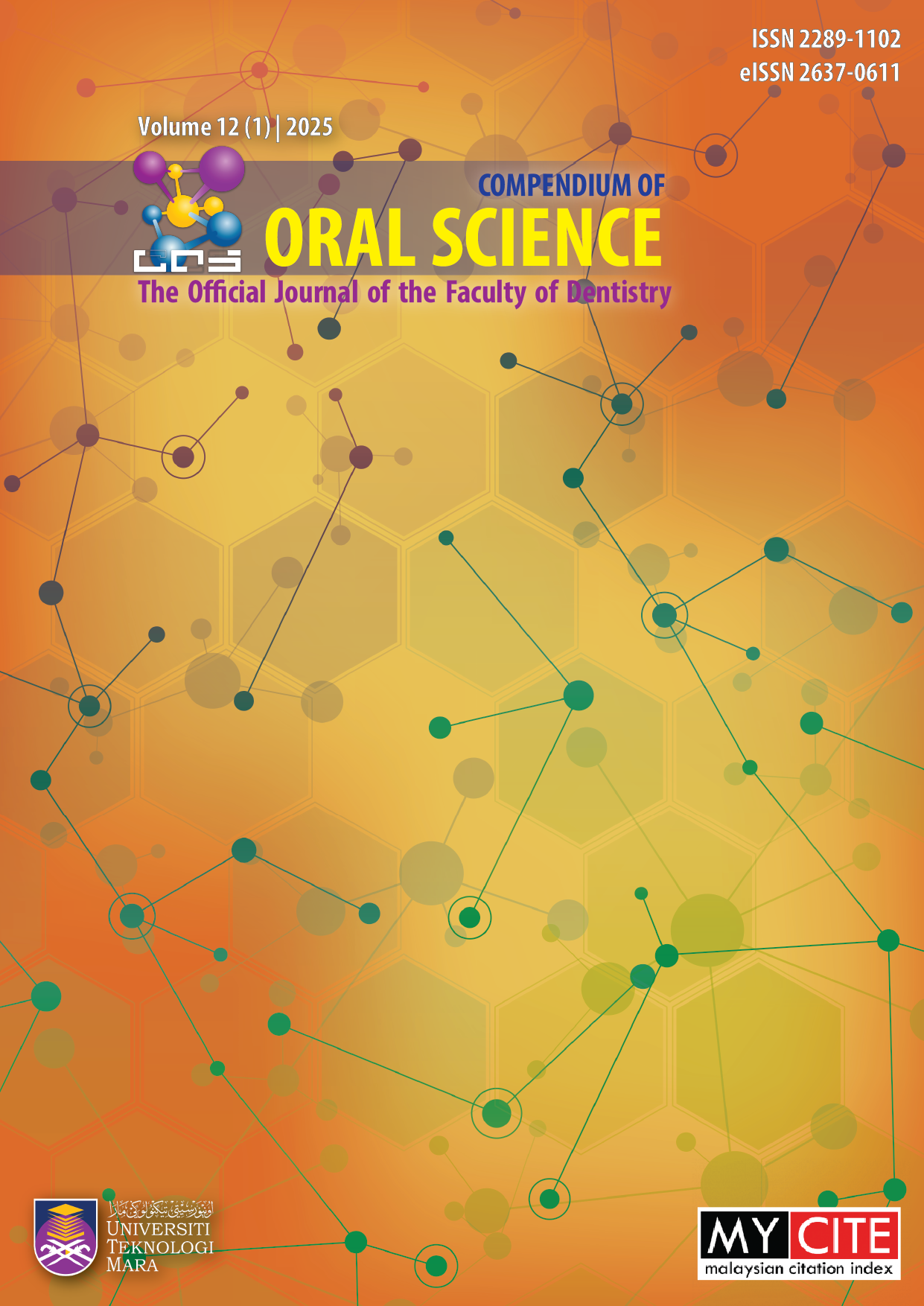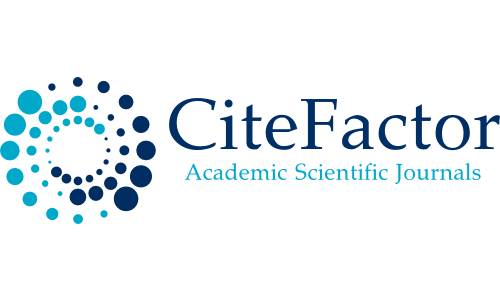Antibacterial Activity of Endophytic Streptomyces spp. isolated from Medicinal Plants of Dental Importance
DOI:
https://doi.org/10.24191/cos.v12i1.5652Keywords:
endophytes, streptomycete, medicinal plants, antibacterialAbstract
Wide variations of plant species in Malaysia provide suitable hosts for the isolation of endophytic streptomycetes, which can be potential sources of bioactive compounds with therapeutic applications in dentistry. Objectives: This study’s objectives were to isolate endophytic streptomycetes from medicinal plants and to evaluate their antibacterial activity against Streptococcus mutans, a key pathogen responsible for dental caries. Methods: Endophytic streptomycetes were isolated from seven fresh plants: Mauritius papeda (Kaffir lime), Cosmos caudatus (Ulam Raja plant), Lawsonia inermis (Henna plant), Piper sarmentosum (Kadok), Kaempferia galanga (Cekur plant), Ziziphus mauritiana (Bidara plant), and Psidium guajava (Guava plant), using a surface-sterilization method. Different plant parts were placed on five isolation media, namely Water Agar, International Streptomyces Project (ISP) 2, ISP 4, ISP 5, and Tap Water Yeast Agar, and incubated at 37°C for up to one month. Isolates were identified by morphological characteristics and tested for antimicrobial activities through a cross-streak assay. Results: A total of 38 endophytes were successfully isolated, with 19 identified as streptomycetes. Specifically, seven, two, five, and three endophytes were isolated from stem, root, leaf, and fruit, respectively. Three endophytic streptomycetes exhibited antagonistic activity against S. mutans. Conclusion: Endophytic streptomycetes demonstrated antibacterial activity against S. mutans, indicating their potential for further development in dental applications.
Downloads
Published
How to Cite
Issue
Section
License
Copyright (c) 2025 Compendium of Oral Science

This work is licensed under a Creative Commons Attribution-NonCommercial 4.0 International License.
Materials contained in the journal may be reproduced for educational purposes provided that both the author(s) and the journal are appropriately recognised; otherwise duplication is not permitted. No articles, reports, or portions there of may be translated into other languages, published in books, journals, magazines, or any other print form without written permission from the authors and from the journal.
Disclaimer: The statements, opinions and data expressed in the articles and reports herein are those of the author(s) and not of the publisher and the editor(s). The publisher and the editor(s) disclaim responsibility for any injury to persons or property resulting from any schemes, methods, instructions or ideas referred to in the content.















